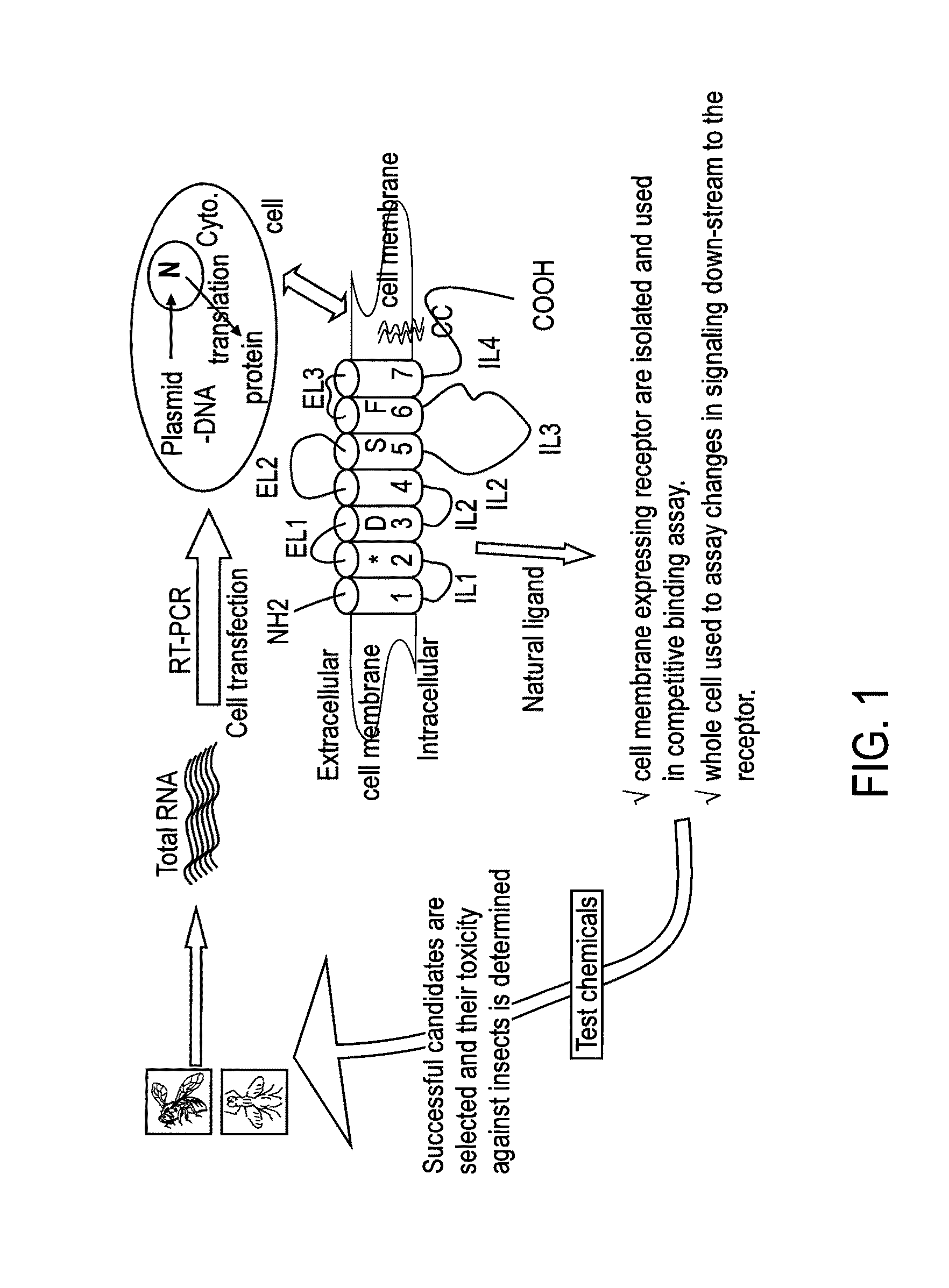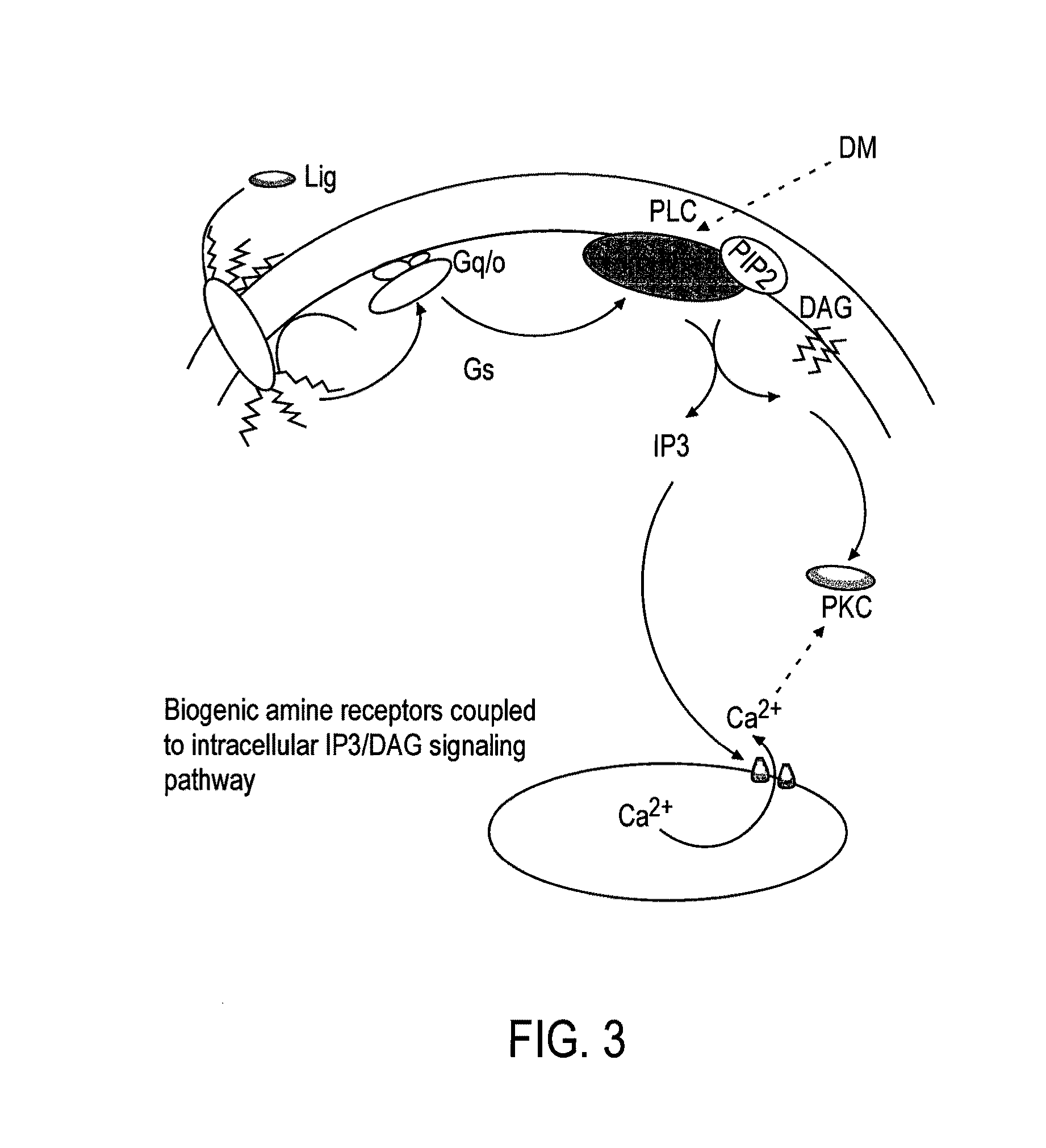Pest control compositions and methods
a technology of compositions and pesticides, applied in the field of insects control, can solve the problems of synergistic combined effect between active compounds and pesticides, and achieve the effect of great disassembly
- Summary
- Abstract
- Description
- Claims
- Application Information
AI Technical Summary
Benefits of technology
Problems solved by technology
Method used
Image
Examples
example 1
Pesticidal Effect on Culex quinquefasciatus
[0403]The effect of compositions, and their individual ingredients, on the mortality of insects is tested. Multiple plexiglass chambers are used. A treatment chamber is provided for each composition and ingredient that is tested, and the chambers are sprayed (aerosol spray) evenly on all surfaces with the composition or ingredient being tested. A control chamber is provided that is not treated.
[0404]Southern house mosquitoes, Culex quinquefasciatus, are obtained as test organisms. Multiple laboratory-cultured, sucrose-fed female mosquitoes aged about 2-5 days are released into the glass chambers prior to the spraying of aerosol. The discharge rate (gm / second) of each can of aerosol to be tested is predetermined. Based on the dosage required, an estimated time of spray of aerosol is discharged into the glass chamber.
[0405]Knockdown of mosquitoes is observed at indicated intervals up to about 20 minutes. After about 20 minutes, all mosquitoe...
example 2
Repellency Effect Against Culex quinquefasciatus
[0407]The repellency of exemplary compositions of the present invention are compared to the repellency of their individual ingredients, and to a non-treated control. Southern house mosquitoes, Culex quinquefasciatus, are obtained as test organisms. Multiple human evaluators test each treatment in a replicated experiment. Experimentation is conducted in a laboratory using multiple-chambered, plexiglass modules, each chamber stocked with about 2-10 day-old colony-reared female mosquitoes. The modules are equipped with sliding doors to expose the mosquitoes to the legs of three volunteers. Treatments are applied at about 28.6 μl to 12 cm2 rectangular sections of skin located directly beneath the chamber openings. Each volunteer conducts 2-minute biting counts for each treatment at five time intervals: 0, 1, 2, 4 & 6 hours post-treatment. New mosquitoes are stocked into the chamber for each time interval. Ambient temperature and humidity ...
example 3
Synergistic Compositions as Indicated by TyR Binding Inhibition
[0421]When the chemical(s) and compound(s) are combined to provide the compositions of the present invention, there is a synergistic effect. The efficacy for insect control and the synergistic effect of compositions can be predicted and demonstrated in a variety of manners, for example, a competition binding assay can be used. With reference to Table 14, the percent TyrR binding inhibition affected by the following agents was determined using a competition binding assay: the natural ligand, Tyramine(TA); Blend 5; Blend 12; DM; Pyrethrum; 90:1 Blend 5+DM; 9:1 Blend 5+Pyrethrum; 90:1 Blend 12+DM; and 9:1 Blend 12+Pyrethrum.
TABLE 14Agent% TyrR Binding InhibitionTyramine (TA)75Blend 530Blend 1260DM10Pyrethrum590:1 Blend 5 + DM509:1 Blend 5 + Pyrethrum6090:1 Blend 12 + DM609:1 Blend 12 + Pyrethrum60
[0422]One example of an synergistic effect shown by this study is as follows: the insect control chemical, Pyrethrum, only has a ...
PUM
| Property | Measurement | Unit |
|---|---|---|
| concentration | aaaaa | aaaaa |
| composition | aaaaa | aaaaa |
| frequency | aaaaa | aaaaa |
Abstract
Description
Claims
Application Information
 Login to View More
Login to View More - R&D
- Intellectual Property
- Life Sciences
- Materials
- Tech Scout
- Unparalleled Data Quality
- Higher Quality Content
- 60% Fewer Hallucinations
Browse by: Latest US Patents, China's latest patents, Technical Efficacy Thesaurus, Application Domain, Technology Topic, Popular Technical Reports.
© 2025 PatSnap. All rights reserved.Legal|Privacy policy|Modern Slavery Act Transparency Statement|Sitemap|About US| Contact US: help@patsnap.com



